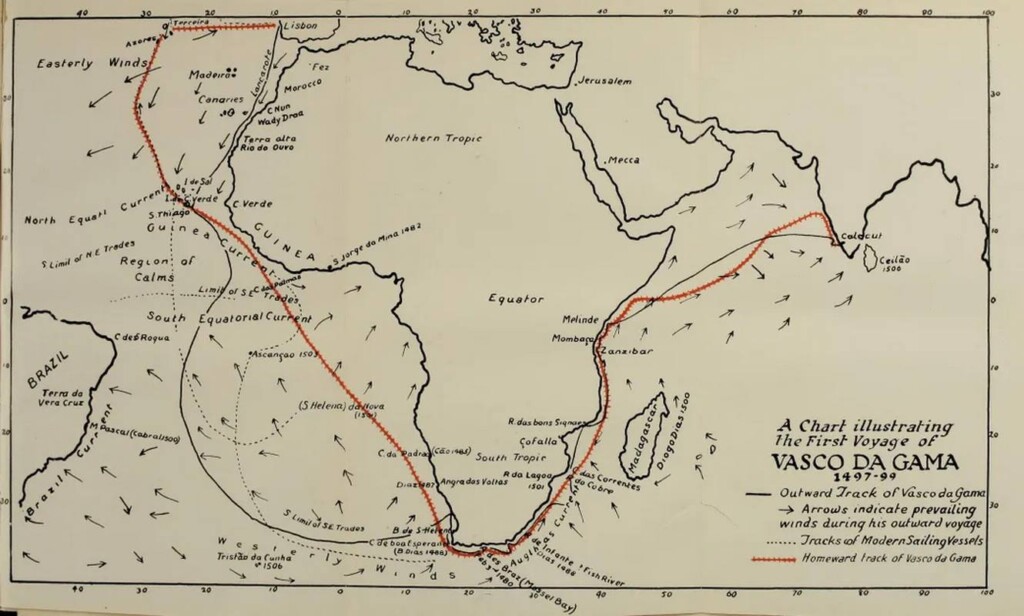 Elephant ivory was found among the wreckage – Credit: Caesar Bita, National Museums of Kenya
Elephant ivory was found among the wreckage – Credit: Caesar Bita, National Museums of KenyaNot far off the Kenyan coast, maritime archaeologists believe they have found the wreckage of a galleon belonging to Vasco da Gama, the Portuguese navigator who found the route to India around Africa.
While the true provenance of the vessel is unclear, the discovery would be of monumental importance to the study of maritime archaeology, and the history of European exploration.
It was originally identified near the city of Malindi in 2013 by Caesar Bita, an underwater archaeologist at the National Museums of Kenya who received a tip from a local fisherman.
Commissioned in 1497 to find a route to “the Indies,” da Gama was the first European to round the Cape of Good Hope, before proceeding to sail north along the coast of Zanzibar to reach India. It was the first route to India by sea, and it changed European and world civilization forever.
On his third, multi-ship voyage in 1524, one of the Portuguese gallons the São Jorge, sank somewhere off East Africa, but de Gama died of an illness en route, and a precise location for the ship was never provided.
After years of documentation, Bita invited the Portuguese nautical archaeologist Filipe Castro from the Center for Function Ecology at the University of Coimbra to investigate the wreck. Together, they believe the ship is the São Jorge, which would make it the oldest European wreck in the whole of the Indian Ocean.
“I think this is a unique shipwreck,” Castro tells Live Science’ “It is a treasure.”
 A map of Vasco da Gama’s first voyage to India.
A map of Vasco da Gama’s first voyage to India.Lying at shallow depths of just 20 feet, this ship is protected by the local population, who are part of a community archaeology project and who the team intends to train so that they can monitor the finds and participate in their recording and analysis.
Elephant ivory and copper ingots have been excavated from the wreck, where few timbers from the ship remain. The divers have uncovered pieces of the hull after digging some trenches on the seafloor, but other features remain covered in coral.
OTHER FINDS SUCH AS THIS: Archaeologists Uncover 900 Ming Dynasty Artifacts From Shipwrecks in South China Sea
“It is larger than what we imagined for an early 16th-century ship,” Castro tells Artnet. “It is enormous. The first feeling you get when you look at it is that it is going to take time to dig it. Carefully, minding the details.”
Although there is a list of eight Portuguese shipwrecks in Malindi waters, the provisional dates of the artifacts point to the first quarter of the 16th century, and a ship that was on the outward journey to India rather than the return journey.
A GOLDEN GALLEON: Priceless Lost Jewels From Legendary Maravillas Shipwreck Are Found in Bahamas
This means it could also be the Nossa Senhora da Graça, another Portuguese vessel that sank in 1544, but that wasn’t a part of the famous navigator’s fleet.
MORE HISTORICALLY IMPORTANT SHIPWRECKS: Experts Begin Hunt for Most Valuable British Shipwreck in History, and the Gold Worth 4 Billion
Maritime archaeologist Sean Kingsley, who wasn’t involved in the excavations, called the discovery “archaeological stardust.”
“This is one wreck that screams out for protection, respect, and care,” he told Live Science.
SHARE This Story With Your Friends Who Love Archaeology…
Source link

